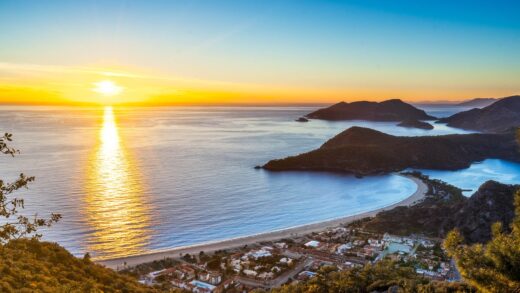The story (in Chinese) was first published in Issue 10/2021 of Lonely Planet China magazine.
This English version was translated from the Chinese original with DeepL, with the manual correction of some obvious mistranslations.. I apologize for any mistakes made by this AI translation tool.
Kaş, the brow and eye of the Mediterranean
Between Fethiye and Antalya, the small town of Kaş has always been a favourite destination for tourists. If the entire coastline of the Tekke peninsula is compared to a necklace, Kaş is the brightest pendant.
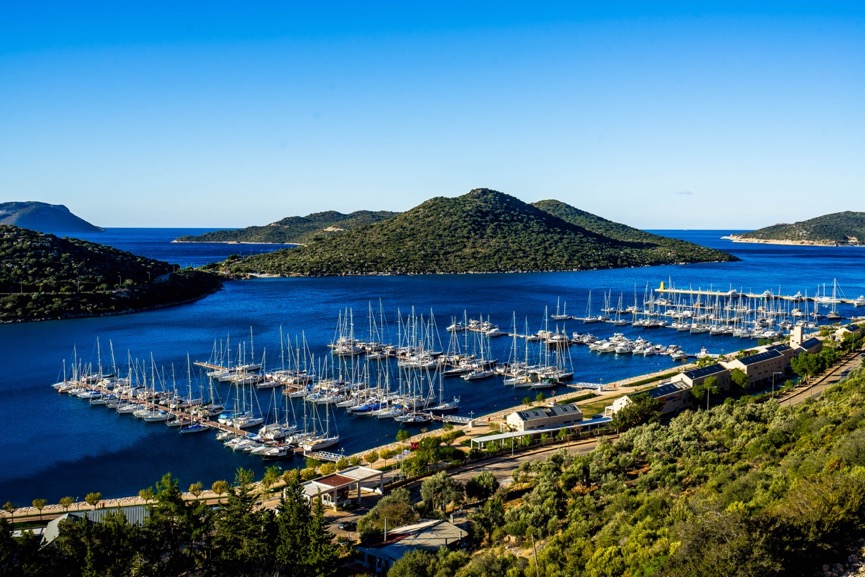
It was a sunny afternoon when we arrived in Cache. This seaside town, which is easy enough to explore on foot, offers not only blue Mediterranean scenery (and crowds of tourists in high season), but also easy encounters with Lycia’s hanging coffins and several thousand-year-old monuments. Yet a ten-minute walk out of town brings me to a world that feels like a paradise: a jewel-like, crystal-clear bay under a clear blue sky. I stepped onto the empty pebble beach and for a moment the whole world seemed to be silent, except for the regular rustling of the water against the shore.
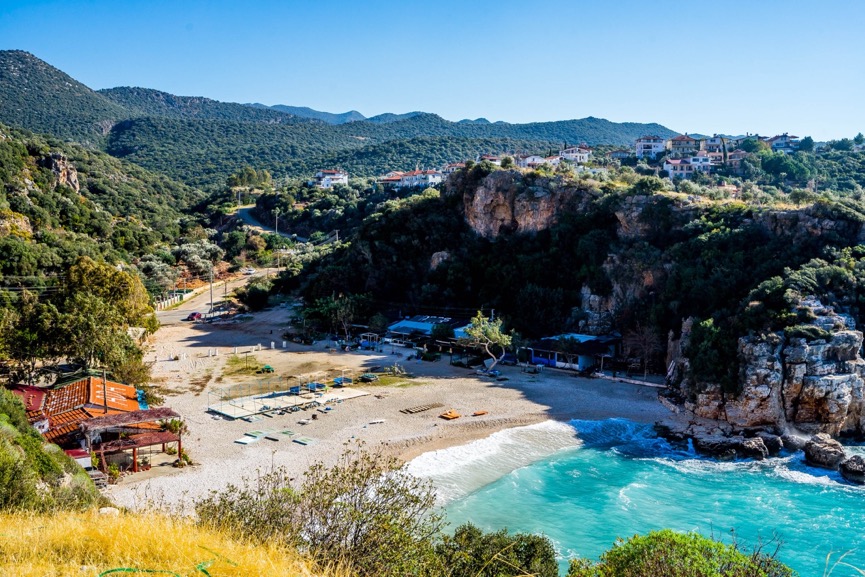

And on the other side of town, there is a small Greek theater. This was in fact the centre of the ancient Greek city. The semi-circular stage, where the actors dressed and prepared, is long gone, but just enough to give visitors in the audience the best view of the Mediterranean from above. The sun was setting over the sea in the distance and the sky reflected a glorious rose-colored evening sun. In front of me, a couple sitting side by side on the steps of the theatre watching the sunset made the best foreground for this moment in the camera.
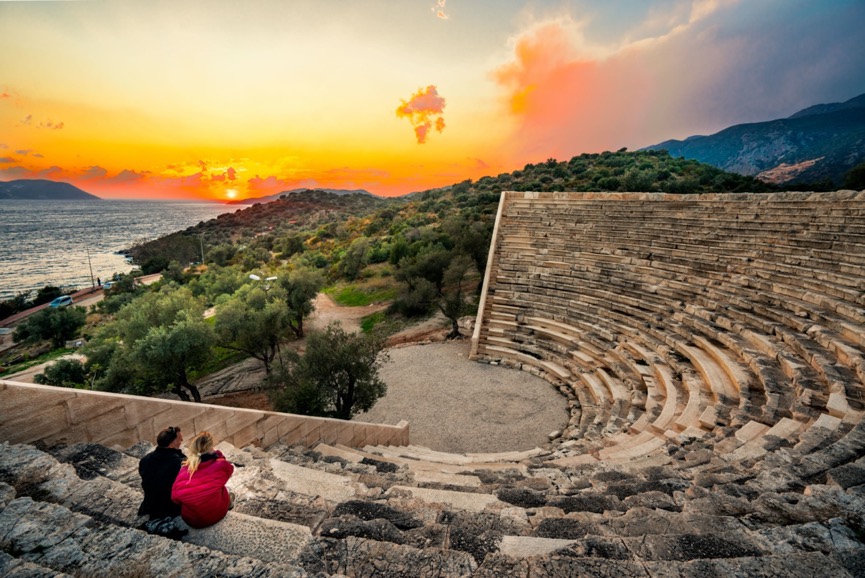
Back at the B&B by the sea, I found I was actually the only guest on the day. The owner, Omar, a Turkish boy of my age, stood on the stairs with a wicked grin on his face, shaking the Turkish favourite, Efes, in my hand. Naturally, I couldn’t resist the temptation, so I sat on his rooftop terrace overlooking the Mediterranean, and with two glasses of wine, a pleasant conversation began.
“Did you know that there is also a ‘Kashgar’ in China?” “‘Kashgar’ in Uyghur means ‘jade-like color’. I guess the Turkish word Kaş means the same thing?” ──I am quite sure that anyone who has seen the seascape of Kash cannot help but associate it with crystal-clear jade.
“No, Kaş means this.” Omar reached up and pointed to his eyebrows. “Eyebrows?” I was confused. He pointed across to the small island and said, “It’s the eye.” Another pointed to the narrow peninsula sticking out into the sea not far away, “That’s the eyebrow.”
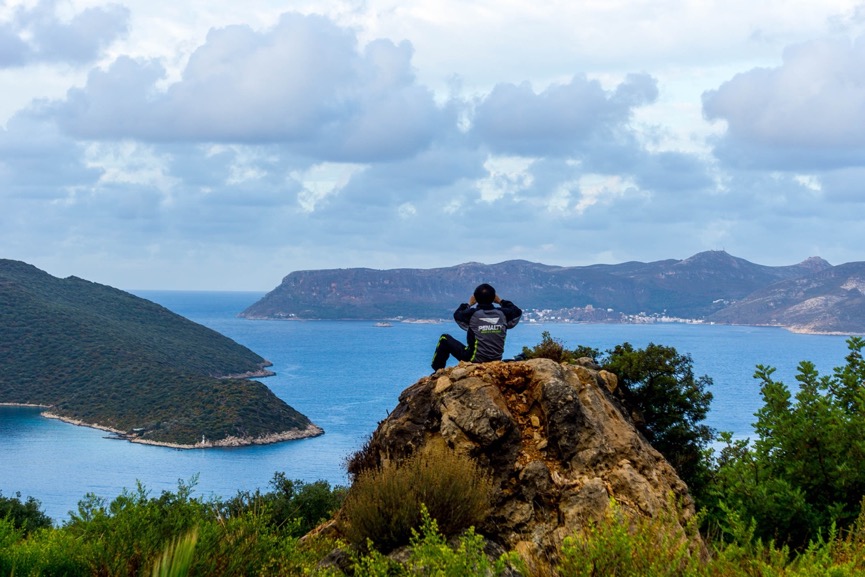
I opened the map on my phone and there it was: the Çukurbağ peninsula, which juts into the sea from Kash, shaped like an eyebrow on the Mediterranean Sea, guarding the small island next to it. Yet the island that serves as the “eye” is just a stone’s throw from the shore, yet on the map it is Greek territory. The Greek mainland, you know, is thousands of miles away.
“In fact, not only that island, but also Kadesh, was mostly Greek back then.” Omar doesn’t shy away from this history. In the “population exchange” of the early 20th century, Turkey got all of Anatolia’s coast, but not all of the islands strung like pearls along the shoreline, including the island of Kastellorizo, opposite Kas.
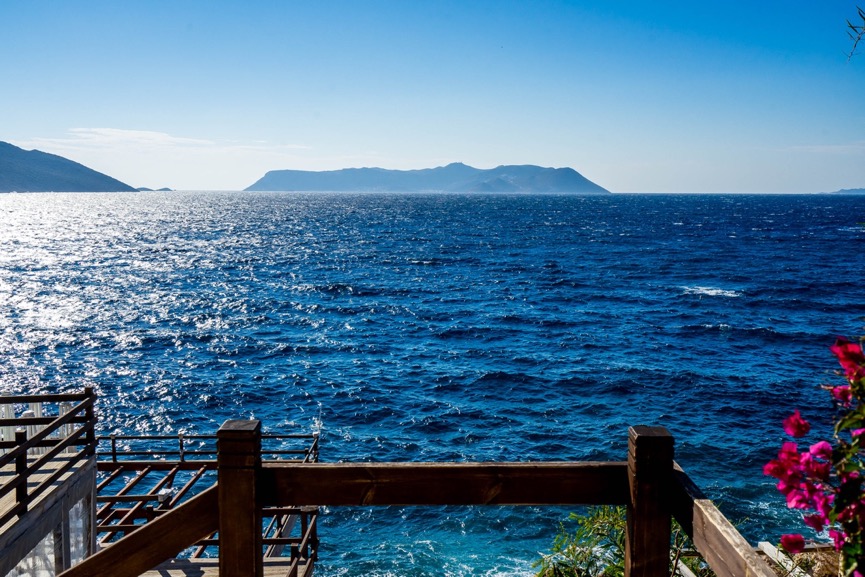
Omar was clearly upset by this result: “We still have the mosque left on the island! Look at it, it’s so far from Greece and so close to us, so it should be ours too!” He actually laughed at this statement himself, and of course the drunken bragging could be so free and unrestrained.
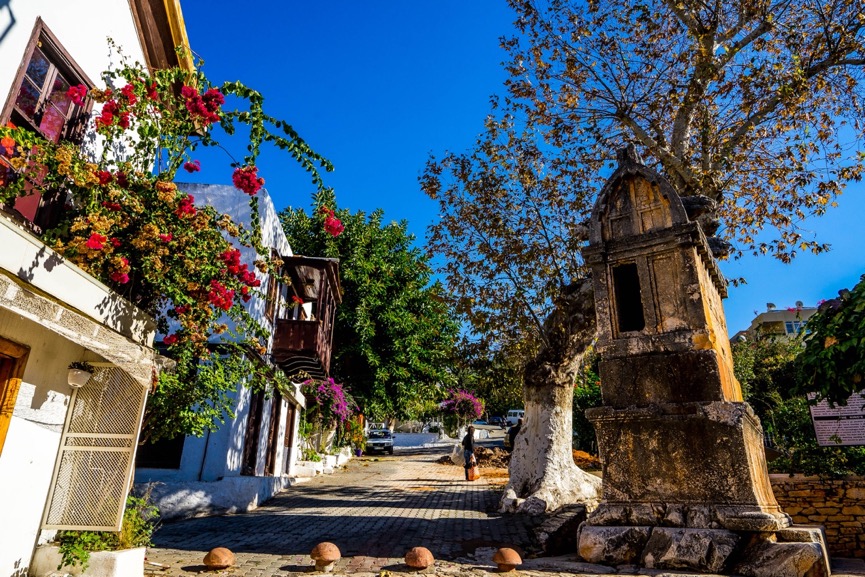
In fact, along the way, I’ve been thinking about the relationship between the two communities, and indeed the two countries, of Turkey and Greece. As Omar said, the Turks left behind a mosque that still stands on the shores of a Greek island, but this beachfront B&B, of which Omar is so proud, is decorated in authentic Santorini-style white. After all, in today’s Mediterranean, “Greek style” is the secret to attracting holidaymakers.
If the Hellenization experienced by the Lycians here 2,000 years ago was in the form of carved columns and Greek letters, then today’s “Santorini style”, which is being copied by the Turkish tourist industry, is not a new era of Hellenization?
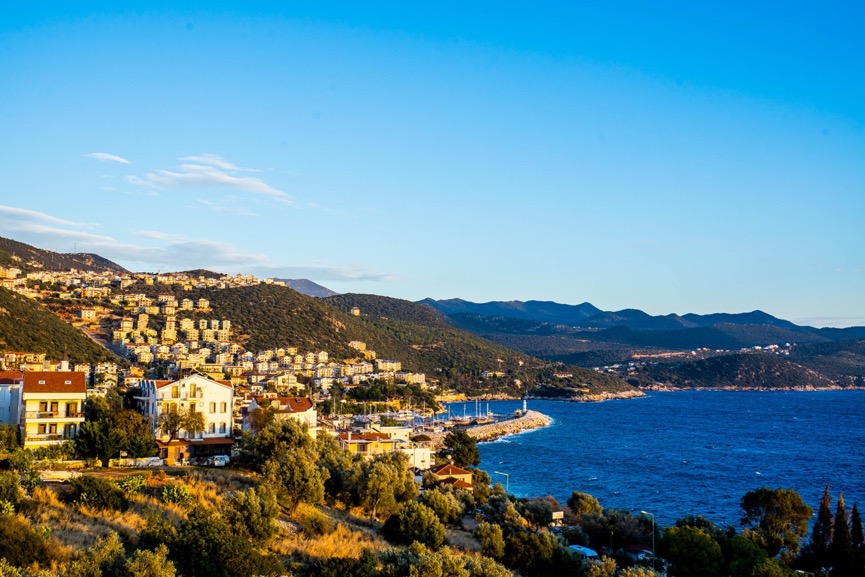
The relationship between Turkey and Greece can be best described as “eyebrows” and “eyes” – without the eyebrows, the eyes would lose their original spirit, and without the eyes, the eyebrows would have no meaning.
Kekova, the mysterious “underwater Pompeii”
In the 2nd century AD, a violent earthquake caused the collapse of the entire city of Simena in Lycia and turned Kekova, once part of the coast, into an island. The sea submerged houses and roads, but accidentally became the best protection of the ruins from the changes of the years. To this day, the submerged city is still visible, giving it the reputation of “underwater Pompeii” and allowing us today to see the city of Lycia in its entirety from the most unique perspective.
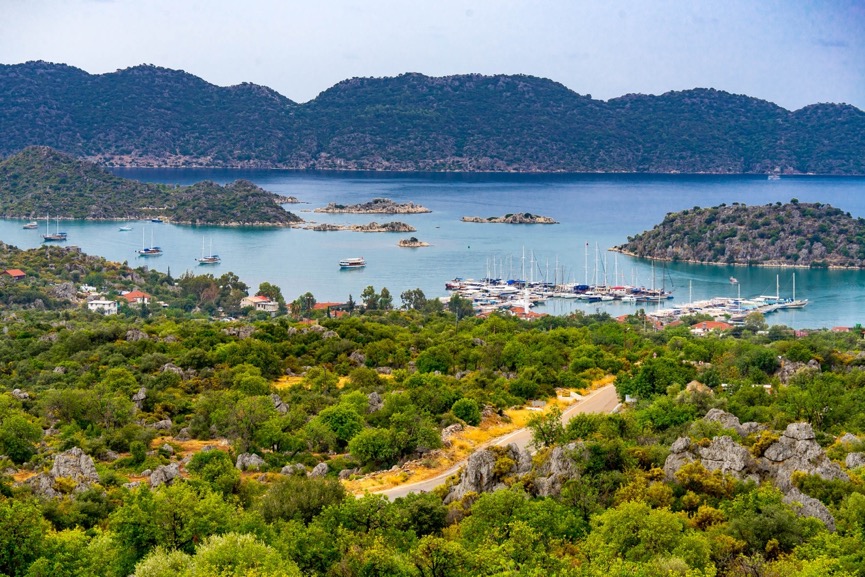
To protect the fragile ruins, all swimming, snorkeling and diving is prohibited here. The only way to see the ruins up close is to charter a boat and sail over them at the slowest speed on a clear, calm day. Ramazan is one of the operators of this business, renting out his restored second-hand sailboat on Audemars Piguet – chartering an entire boat with four bedrooms and room for up to eight people, with three meals a day and a trip to an underwater city, for as little as 2,500 lira (about $400 at the time) for 24 hours.
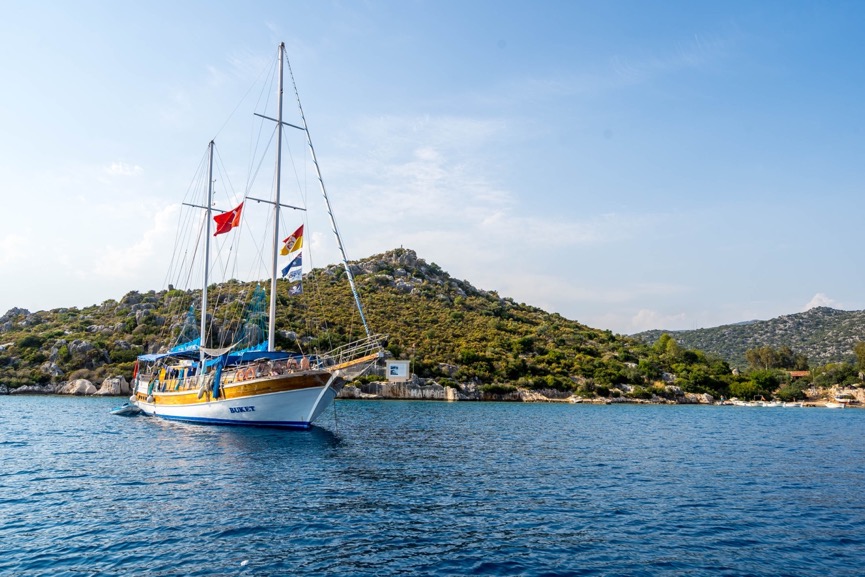
I was a little worried before we set off, could I really see the ruins below the surface of the water from the boat? Ramazan was confident: “No problem!” When the boat reached the top of the ruins, I realized that my worries were indeed superfluous: the sparkling, crystal-clear water in front of me not only did not block the view, but also added a dream-like atmosphere to the submerged ruins. Even on the opposite side of the island, on the island of Coquoy, one can see the remains of a number of buildings that were once the taller structures in the city of Ximena.
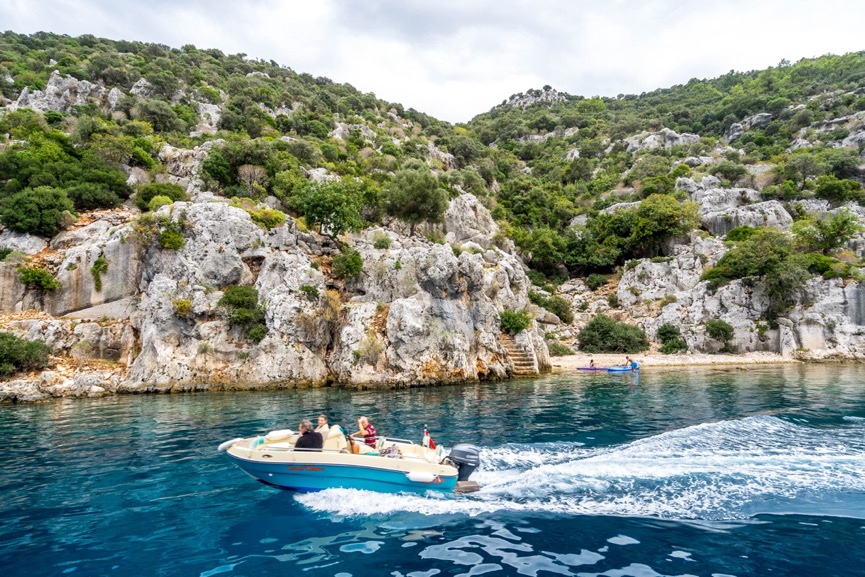
In this case, as a snorkeler, I probably would have taken a leap off the boat if not for the ban. Ramazan seemed to read my mind, and when he was done looking at the ruins, he turned the boat around and headed for the nearby town of Kalekoy, which was no longer under the ban. Nearing the shore, he made a “Go!” gesture at me. I didn’t wait for the boat to stop before jumping into the turquoise waters and enjoying this private “infinity pool”.
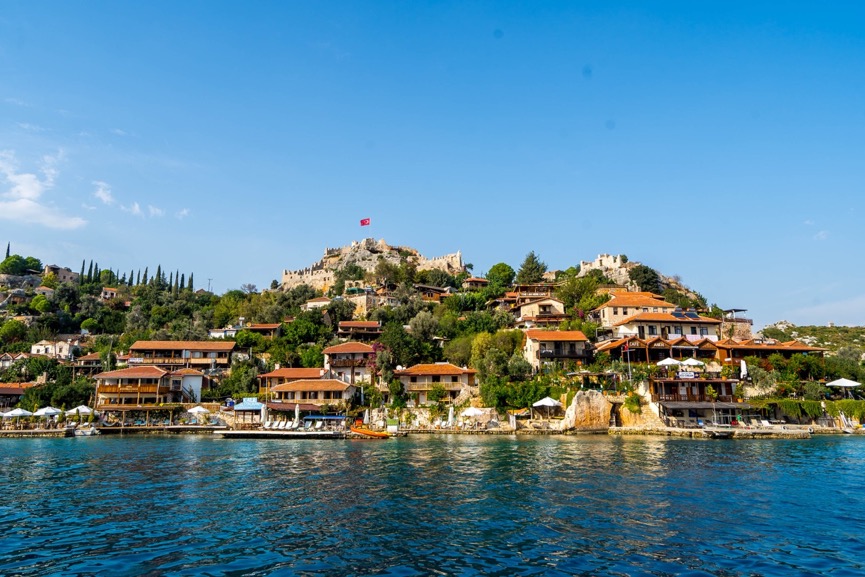
As the night wore on, Rama sponsored a delicious seafood dinner, cooked by his hands, to sweep away all the fatigue of the trip. The village on the shore was already lit up, and I lay back comfortably on the deck, letting the breeze brush my cheeks while the stars shone brightly overhead.
Postscript: Looking back at the Lycia Road in Antalya
The trip ends in the seaport city of Antalya. This city, located at the end of the Lycia Road, is also the largest & busiest place along the route. For me, there is no better way to enjoy this moment than to spend a relaxing holiday here.
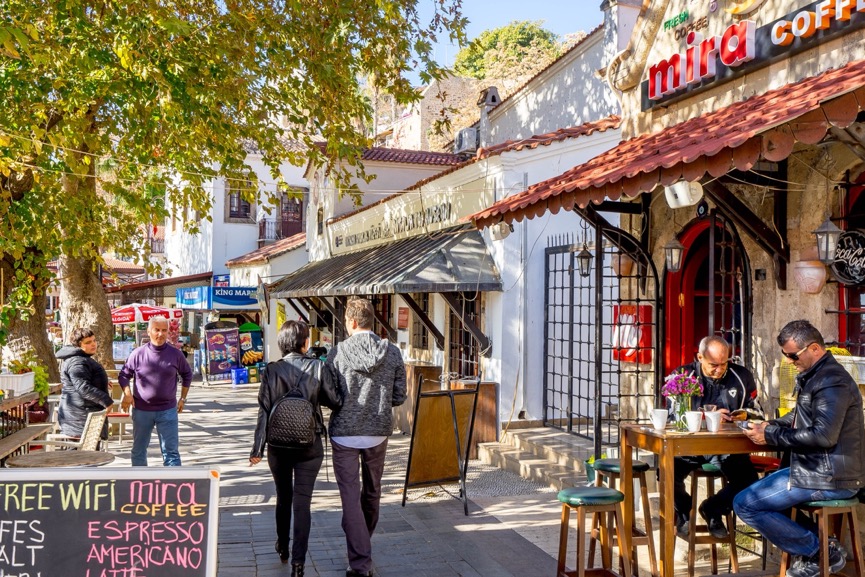
Antalya owes its name to the city’s founder, Attalos II, King of Pagama in the 2nd century BC. The old town by the sea has an authentic European feel, but there is no shortage of old Ottoman-style architecture. Restaurants, museums and boutique hotels line the streets side-by-side, and by the harbor, which dates back to Roman times, the operators of antique sailing ships diligently beckon visitors.

Rather than placing myself in the midst of a noisy crowd, I prefer to stand high up on the shore and watch from afar the sailing ships, going out to sea and coming back with the breeze. Did the sailing ships that sailed away in the days of ancient Rome two thousand years ago set out on the same waves?

Turning my head to the west, I could see the mountains of the Teche Peninsula. It was early winter, and although the sun was still warm on the Mediterranean Sea, the distant mountain tops were covered in snow, giving me the illusion of seeing snow-capped mountains from afar. That was the direction I had come from, and as the road passed through my mind like a movie, I made a silent wish that I would return and measure the entire length of the Lisieux Road, which was over 500 kilometres, with my feet.



